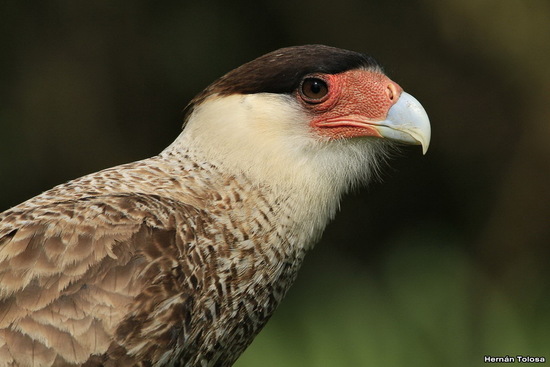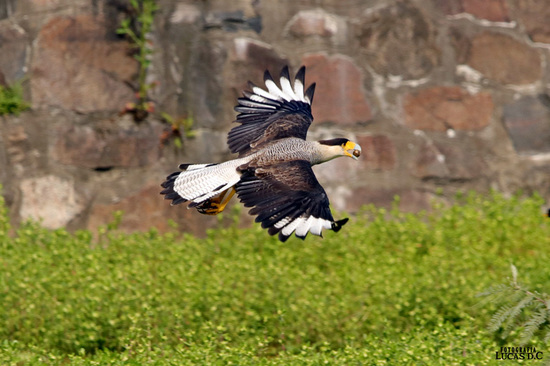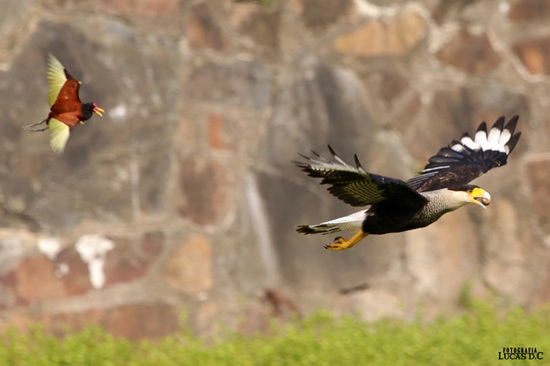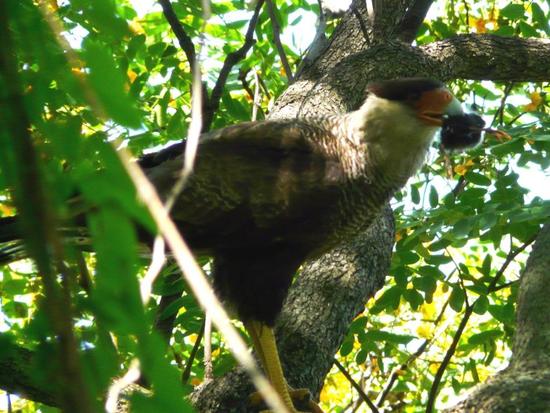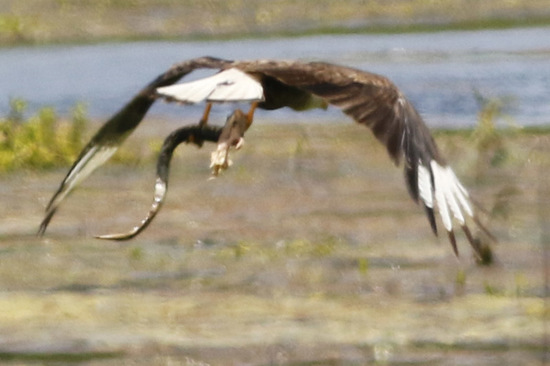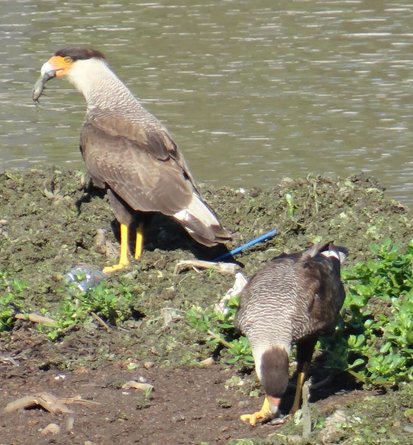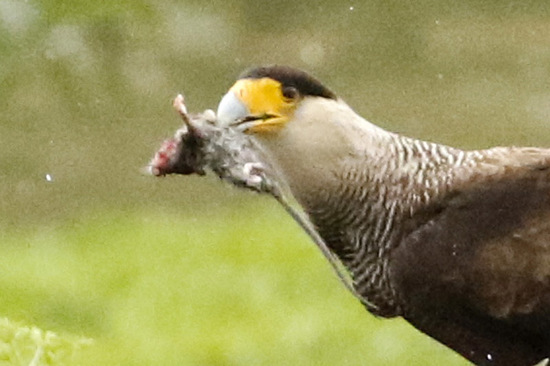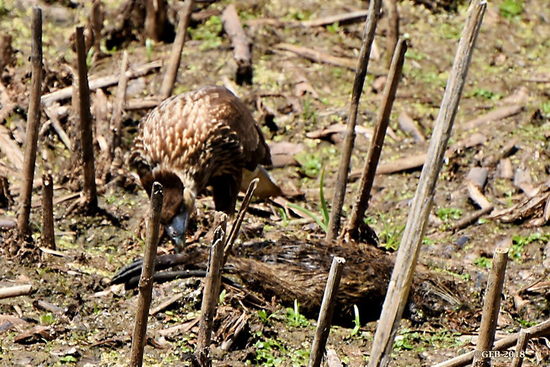Southern caracara - feeding
It shares the family Falconidae with falcons. These predatory species have distinctive anatomical characteristics, bill and talons, adapted to tear flesh, basic component of their diet.
The southern caracara´s bill is robust and has sharp cutting edges. An orange or yellow soft skin covers practically half bill including the nares. The upper mandible of the bill (rhinotec) is longer than the lower one (gnathotec) and it strongly curves down giving the bill a hook-like appearance. It is adapted to kill a live prey by biting the neck. If the prey is dead, the caracara holds it with its talons to hook the point of the bill into the flesh. Then it pulls it out and tears it apart.
The talons are neither so strong nor so curved as in falcons'.
The southern caracara´s bill is robust and has sharp cutting edges. An orange or yellow soft skin covers practically half bill including the nares. The upper mandible of the bill (rhinotec) is longer than the lower one (gnathotec) and it strongly curves down giving the bill a hook-like appearance. It is adapted to kill a live prey by biting the neck. If the prey is dead, the caracara holds it with its talons to hook the point of the bill into the flesh. Then it pulls it out and tears it apart.
The talons are neither so strong nor so curved as in falcons'.
The southern caracara is opportunistic. It alternates its feeding techniques: it hunts or scavenges depending on the opportunity. It is not a typical hunter like raptors which swoop down on the prey. It descends to the ground and runs after the prey to reach it. The southern caracara chooses small or helpless preys.
It is basically a carrion feeder. It is common to see the southern caracara flying over terrestrial and aquatic environments or walking on the ground in search for carrion. Right time, too, to peck for insect larvae, reptiles and worms, which complete its diet
It is basically a carrion feeder. It is common to see the southern caracara flying over terrestrial and aquatic environments or walking on the ground in search for carrion. Right time, too, to peck for insect larvae, reptiles and worms, which complete its diet
24-06-11 © Roberto Ares
Eating a rock pigeon
14-09-14 © Judith Erica Sandberg
The caracara was walking very unconcernedly. All of a sudden he stopped and leapt ot one side to catch a prey, or it was there beforehand. I do not know. It seemed to be a pigeon. Feathers kept flying ceaselessly
24-01-18 © Claudia y Tito Di Mauro
A southern caracara gets hold of a yellow-billed corpse which was lying at the Coypu Pond. It takes the body to a safer place, where it is followed by another southern caracara, which pretends to be invited to the feast.
16-01-18 © Gustavo F. Brahamian
Eating a coypu


